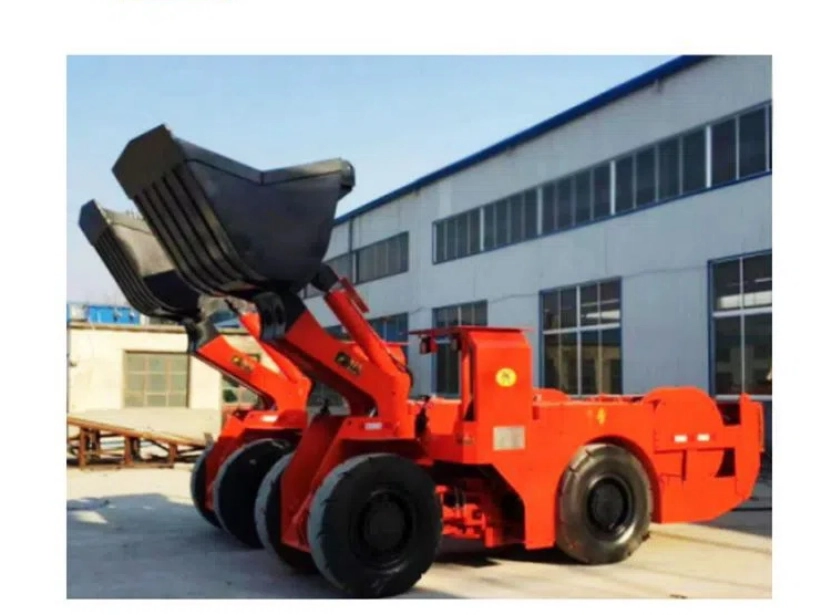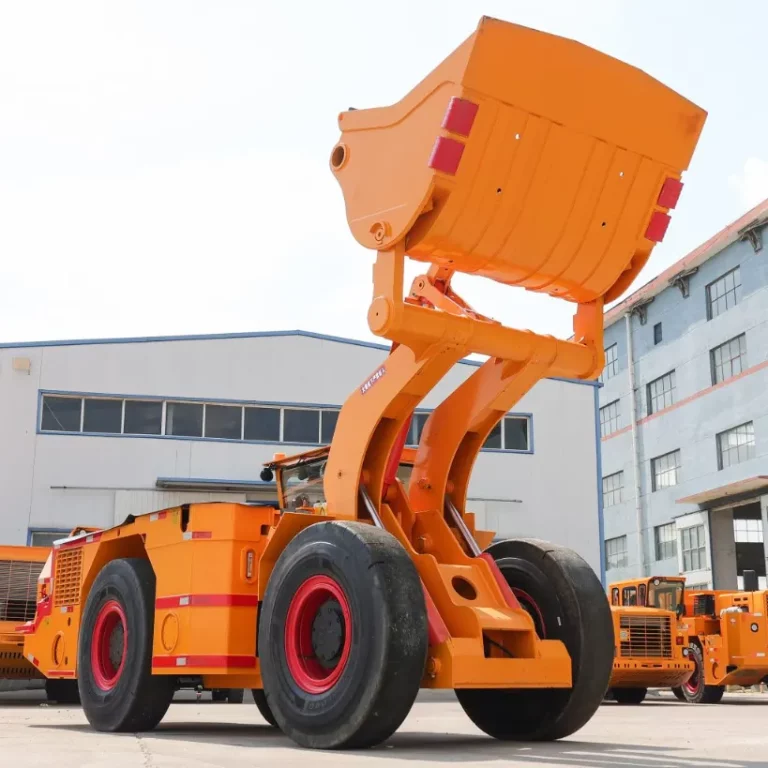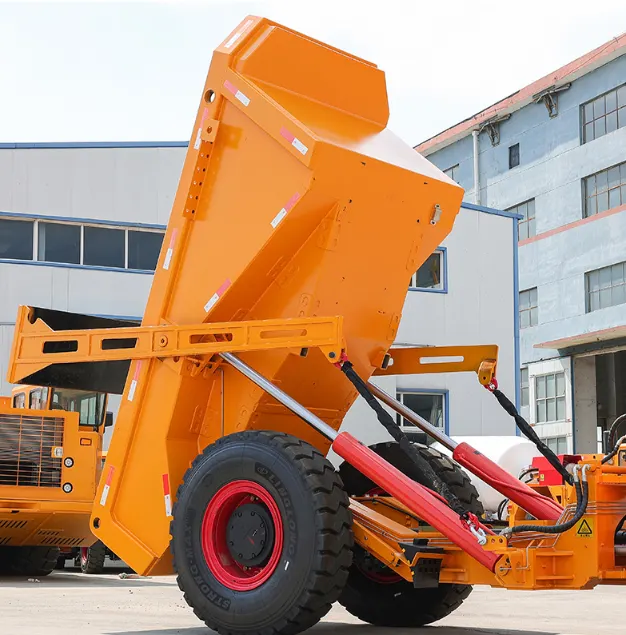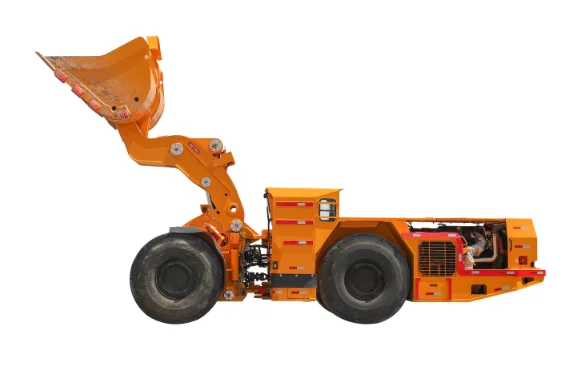
Overview of Underground Mining Loaders
The Role of Loaders in Underground Mining Operations
Underground mining loaders, or Load-Haul-Dump (LHD) machines, are like the big shots down in deep mines. They grab busted-up ore or junky rocks from where the blasts happen and cart them off to the surface or some processing spot. These rigs are made to zip around in super tight, rough places underground. That’s why they’re a total game-changer for moving stuff quick in mines below the dirt. They twist through skinny tunnels with heavy piles, making jobs zippy and cutting out tons of hand work.
Key Features and Functions of Underground Mining Loaders
These underground mining loaders are built with short, stubby frames to sneak through tight mine paths. They’ve got beefy hydraulics for hoisting and tossing heavy stuff. Most have bendy steering to wiggle around super easy, tough brakes for lumpy ground, and hard-as-nails builds to take on gritty mine vibes. Some even come with remote controls or cozy driver seats to keep folks from getting tuckered out on long hauls.
Understanding Diesel Underground Mining Loaders
How Diesel Loaders Operate in Subsurface Environments
Diesel underground mining loaders run on engines that guzzle diesel fuel to crank out power. Those engines push pumps that make the loader roll, scoop with the bucket, and turn corners. Diesel rigs are wicked cool for their big muscle, especially when lugging ore up steep hills or over bumpy mine ground.
Advantages of Using Diesel-Powered Loaders
Diesel underground mining loaders are a big hit ‘cause they’re solid as a rock and super strong. They keep chugging without needing to plug in anywhere, which is awesome for deep mines where power’s a hassle. Their tech’s been around forever, so you can grab parts or find fix-it folks no problem, keeping breaks short and sweet.
Limitations and Challenges of Diesel Loaders
But diesel loaders can be a pain. Their engines cough up gross fumes that muck up mine air, so you need monster fans to keep it safe to breathe. They also pump out heat like nobody’s business, making deep mines feel like a sauna. Plus, the racket and shaking? That’s rough on workers who stick around for long shifts.
Exploring Electric Underground Mining Loaders
The Technology Behind Battery-Electric Mining Loaders
Electric underground mining loaders use big ol’ lithium-ion or nickel-metal hydride batteries to juice up electric motors instead of gas guzzlers. These motors spin the wheels and work the hydraulics just like diesel ones, but with way less clunky bits. Battery-electric LHDs often have brakes that snatch back energy when slowing down to keep the juice flowing longer.
Benefits of Electric Underground Mining Loaders
The coolest thing about electric loaders is they don’t spit out any fumes where they roll. That means you skip those giant air fans, saving piles of cash. They’re hush-hush quiet and don’t heat up like diesel rigs, so workers stay comfy and safe. Plus, with fewer bits to fiddle with, they don’t need fixing as much.
Drawbacks and Considerations for Electric Loader Use
Electric underground mining loaders got some quirks, though. Setting up charging spots costs a boatload, especially in far-off or super deep mines where power’s tricky to get. Batteries can get wonky in crazy hot or cold mine spots, slowing stuff down if you don’t keep an eye on ‘em. And they can’t run as long as diesel ones without a pit stop for juice.
Comparing Electric vs Diesel Underground Mining Loader Performance
Power Output and Efficiency in Different Operating Conditions
Diesel loaders bring monster strength for heavy jobs like hauling chunky ore far or up steep slopes. But electric loaders are catching up quick with snazzy motor and battery tricks. In stop-and-go tunnel stuff, electric LHDs are champs ‘cause they kick in power fast and save juice with those neat brakes.
Maintenance Requirements and Long-Term Reliability
Electric underground mining loaders are easier on the fix-it front since they skip messy fuel systems, gears, and fume parts that diesel rigs got. So:
They need less tinkering. They’re down less often. You can slap on smart gear to catch problems early.
Diesel LHDs need more checkups, but their fix-it game’s been around so long, they’re trusty where help’s nearby.
Ventilation and Emissions Impact on Mine Safety
The big deal with electric versus diesel LHDs is how they mess with mine air. Diesel fumes pack nasty stuff like dust, carbon monoxide, and nitrogen oxides, so you need huge fans to clear it out. That’s a big power bill. Electric LHDs make zero fumes where they work, which is super sweet for keeping workers healthy and mines chill with tough air rules.
Cost Analysis: Electric vs Diesel Underground Mining Loaders
Initial Investment and Equipment Costs
Electric loaders cost a ton upfront ‘cause of fancy batteries and power-managing gizmos. Plus, you gotta build charging spots, which piles on the starting bucks.
Fuel vs Electricity Consumption Over Time
Diesel fuel prices jump around like crazy, and that’s a bill that keeps coming. Electricity’s usually steadier if you’ve got a power grid. Over time, electric loaders save you cash per hour compared to diesel’s per-liter tab.
Lifecycle Costs and Return on Investment
When you look at costs over years—think cheaper fixes and less fan power—electric LHDs give you more bang for your buck even with the big starting price. Mines wanting to go green love how these savings match up with earth-friendly vibes.
Environmental and Regulatory Factors Affecting Loader Choice
Emission Standards for Underground Equipment
Governments are cracking down hard on mine gear fumes. Rules like Tier 4 Final or Stage V make diesel rigs need pricey clean-up gear, and they still kick out some junk. That’s pushing mines to cleaner stuff.
The Push Toward Sustainable Mining Practices
With the world chasing green goals to fight climate stuff, mining folks get nudged by big shots and rules to use cleaner gear like underground mining loaders. QINGDAO ZONGDA MACHINERY CO., LTD Customization Service helps whip up gear that fits these new green rules everywhere.
Frequently Asked Questions (FAQs)
- What is an underground mining loader used for?
An underground mining loader grabs blasted rock or ore and carts it to trucks or conveyors in tight mine tunnels. - Are electric underground mining loaders better than diesel ones?
Electric ones run cleaner and need less fixing but cost more to kick off and need charging spots. It’s all about your mine’s setup. - How do battery-electric loaders improve mine safety?
They ditch bad fumes like CO2 or NOx in tunnels, so you need less air systems and get cleaner air for folks working down there. - What’s more cost-effective: electric or diesel loader?
Electric ones cost more to start but save on power and fixes, giving better bucks back over time depending on how you roll and your mine’s deal. - Can I switch my current fleet from diesel to electric easily?
Switching needs some planning for power upgrades and training, but lots of makers got half-and-half options to ease into electric rigs with mixed fleets of underground mining loader tech.
For more dirt on gear made just for your mine’s needs—electric or diesel—peek at QINGDAO ZONGDA MACHINERY CO., LTD Customization Service today!





